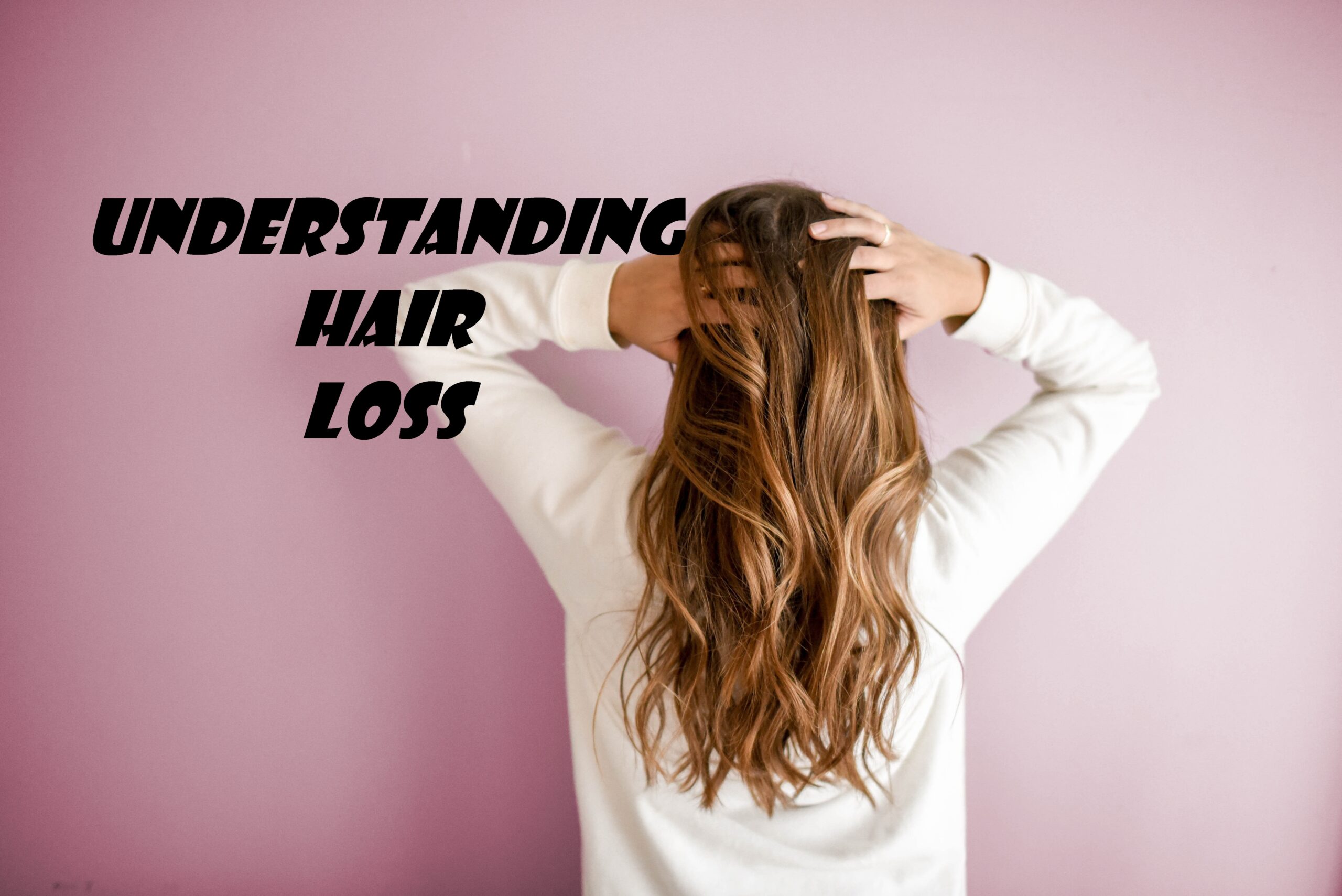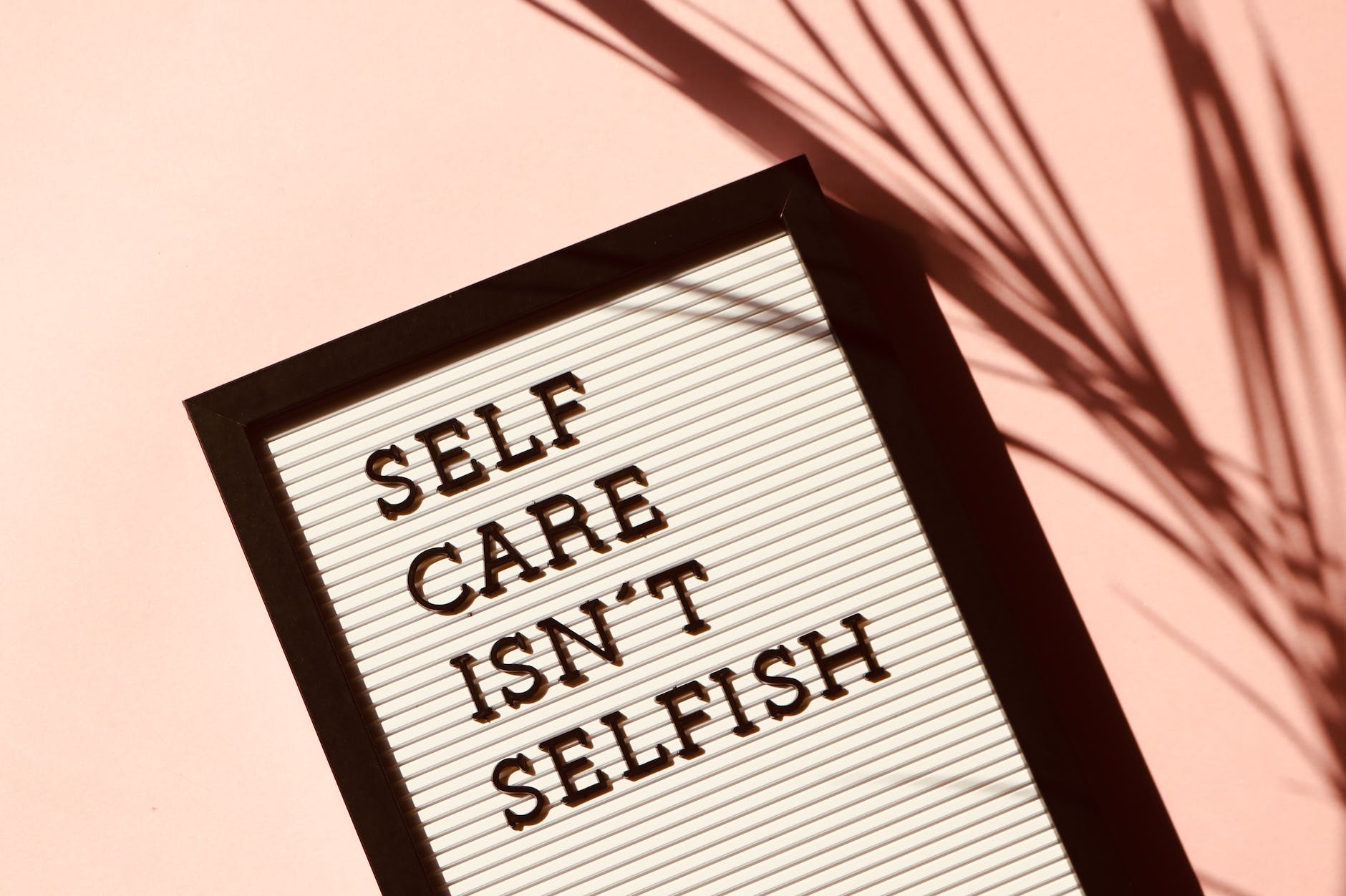Understanding Hair Loss: Causes, Prevention, and Treatment
***freeDIGIBOOK***How to become healthy. Health is an essential aspect of life that should be prioritized by everyone
Chapter 1: Introduction to Understanding Hair Loss
Hair loss is a common issue that affects millions of people around the world. It can occur in both men and women, and can be caused by a variety of factors. Losing hair can have a significant impact on one’s appearance, self-esteem, and overall quality of life. In this chapter, we will explore the basics of hair loss and its impact on people’s lives.
Understanding hair loss also known as alopecia, is a condition where hair falls out from the scalp or other parts of the body. It can be temporary or permanent, depending on the underlying cause. There are different types of hair loss, including androgenetic alopecia, telogen effluvium, alopecia areata, and scarring alopecia.
Hair loss can be caused by a variety of factors, including genetics, hormonal changes, medication side effects, nutritional deficiencies, and stress. Some types of hair loss are hereditary and may be passed down from one generation to the next. Hormonal changes, such as those that occur during pregnancy or menopause, can also cause hair loss. Certain medications, such as chemotherapy drugs, can cause temporary hair loss as a side effect. Nutritional deficiencies, such as a lack of protein or iron in the diet, can also lead to hair loss. Finally, stress is another common cause, as it can affect the body’s hormonal balance.
The impact of hair loss on individuals can vary, and some people may experience significant emotional and psychological distress as a result. Can lead to feelings of anxiety, depression, and low self-esteem. It can also affect one’s social life and professional relationships. However, it’s important to remember that hair loss is a common condition and that there are many treatment options available.
In this book, we will explore the causes of hair loss, as well as prevention and treatment options. We will also discuss the emotional and psychological impact of hair loss and provide solutions for coping with this condition. Understanding is the first step towards taking action to prevent and treat it, and we hope this book will serve as a valuable resource for those who are struggling with this condition.
Chapter 2: Understanding Hair Growth
To understand hair loss, it’s important to first understand the basics of hair growth. Hair growth is a complex process that occurs in cycles, with each cycle consisting of three main phases: anagen, catagen, and telogen.
The anagen phase is the growth phase of the hair follicle. During this phase, hair grows actively from the root, and it can last anywhere from two to six years. The length of the anagen phase is determined by genetics and varies from person to person.
The catagen phase is a transitional phase that lasts for about two weeks. During this phase, the hair follicle shrinks and detaches from the blood supply, causing the hair to stop growing.
The telogen phase is the resting phase of the hair follicle. During this phase, the hair is fully formed but not actively growing. It lasts for around three months before the hair falls out and the cycle starts again.
On average, a person loses around 50 to 100 hairs per day as part of the normal hair growth cycle. However, when hair loss occurs, it can be due to disruptions in this cycle.
Hair growth is controlled by a variety of factors, including genetics, hormones, and nutrition. Hormones such as testosterone and estrogen can affect hair growth, which is why often more common in men. Nutritional deficiencies, such as a lack of iron or vitamin D, can also impact hair growth and lead to hair loss.
In addition to understanding the basics of hair growth, it’s important to note that hair growth patterns can vary based on age, gender, and ethnicity. For example, hair growth tends to slow down as people age, and men may experience more hair loss than women due to hormonal differences.
Overall, understanding the basics of hair growth is crucial for understanding the causes and treatment. By understanding the hair growth cycle, you can better understand the factors that can impact hair growth and take steps to prevent hair loss or promote hair regrowth.
Chapter 3: Common Causes of Hair Loss
Hair loss can occur for a variety of reasons, and identifying the cause of hair loss is essential for finding effective treatment options. In this chapter, we will explore some of the most common causes of hair loss.
Genetics – Hereditary hair loss, also known as androgenetic alopecia, is the most common cause of hair loss in both men and women. It is caused by a combination of genetics and hormones and can result in thinning hair or baldness.
Hormonal Changes – Hormonal changes can also cause hair loss, particularly in women. Hormonal changes can occur during pregnancy, menopause, or due to conditions such as polycystic ovary syndrome (PCOS). Hormonal changes can lead to hair thinning.
Medications – Some medications can cause hair loss as a side effect. Medications used to treat cancer, arthritis, depression, and heart problems.
Nutritional Deficiencies – Nutritional deficiencies can cause hair loss as well. Lack of protein, iron, and vitamins such as B12 and D can lead to hair thinning or hair loss.
Stress – Stress can also cause hair loss. The stress hormone cortisol can disrupt the normal hair growth cycle.
Hairstyles and Hair Treatments – Certain hairstyles, such as tight braids, ponytails, or cornrows, can cause hair loss due to the tension they put on the hair. Chemical hair treatments such as hair dye, perms, or straightening treatments can also cause hair damage.
Medical Conditions – Medical conditions such as alopecia areata, thyroid problems, and lupus can also cause hair loss.
Identifying the cause of hair loss is crucial for finding effective treatment options. it’s important to consult with a healthcare provider or a dermatologist to determine the underlying cause. By identifying the cause of hair loss, you can take steps to prevent further hair loss and promote hair regrowth.
Chapter 4: Genetics and Hair Loss
Genetics plays a significant role in determining whether someone will experience hair loss. In fact, hereditary hair loss, also known as androgenetic alopecia, is the most common cause in both men and women. In this chapter, we will explore the genetic factors that contribute and how they can be managed.
The hereditary component of hair loss is largely determined by the genes passed down from parents to their children. Hair loss patterns can be inherited from either parent or both, and the genes responsible for hair loss can be expressed differently in each individual.
In men, the main genetic factor responsible for hair loss is the hormone dihydrotestosterone (DHT), which is a byproduct of testosterone. DHT can shrink hair follicles and shorten the growth phase of hair, leading to hair thinning and baldness. Men who inherit the genes for androgenetic alopecia are more likely to have high levels of DHT, which can cause to occur at an earlier age and progress more quickly.
In women, the genetic factors that contribute to hair loss are less well understood. However, studies suggest that androgenetic alopecia in women is also caused by a combination of genetic and hormonal factors.
While genetics cannot be changed, there are ways to manage and treat hereditary hair loss. Medications such as finasteride and minoxidil can be effective in slowing down or reversing hair loss. Hair transplant surgery can also be a long-term solution for hair loss in some cases. Wearing wigs or hairpieces can also be a viable option.
It’s important to note that not everyone who inherits the genes for hair loss will experience it. Lifestyle factors, such as diet and stress, can also impact hair health and hair loss. Maintaining a healthy lifestyle and managing stress levels can help reduce the risk, regardless of genetic predisposition.
In conclusion, genetics play a significant role in hair loss, and hereditary hair loss is the most common in both men and women. While the genes responsible for hair loss cannot be changed, there are effective treatments available. By understanding the genetic factors that contribute to hair loss, individuals can take proactive steps to manage and treat their hair loss.
Chapter 5: Hormones and Hair Loss
Hormonal changes can play a significant role in hair loss, particularly in women. Hormones such as testosterone, estrogen, and thyroid hormones can impact hair growth and lead to hair thinning. In this chapter, we will explore the hormonal factors that contribute to hair loss and how they can be managed.
Androgens: Androgens are male hormones that are also present in women in smaller amounts. Testosterone is converted into a hormone called dihydrotestosterone (DHT) by an enzyme called 5-alpha reductase. DHT can bind to hair follicles and cause them to shrink, leading to hair thinning and hair loss.
Estrogen: Estrogen is a female hormone that promotes hair growth and can help to prevent hair loss. However, during menopause or other hormonal changes, estrogen levels can decrease, leading to hair thinning.
Thyroid Hormones: Thyroid hormones regulate metabolism and can impact hair growth. An underactive thyroid (hypothyroidism) can lead to hair thinning and hair loss, while an overactive thyroid (hyperthyroidism) can cause hair to become brittle and break easily.
Pregnancy: Hormonal changes during pregnancy can also impact hair growth. Many women experience thicker, fuller hair during pregnancy, but after giving birth, hormonal changes can lead to temporary hair loss.
Managing hormonal changes that contribute to hair loss can involve several approaches, including:
Medications: Prescription medications such as spironolactone, finasteride, or minoxidil can help manage hormonal hair loss. These medications work by blocking the action of DHT, stimulating hair growth, or reducing inflammation in the scalp.
Hormone Replacement Therapy: For women experiencing hair loss due to menopause or hormonal changes, hormone replacement therapy (HRT) may be an option. HRT can help regulate hormone levels and prevent hair loss.
Lifestyle Changes: Maintaining a healthy lifestyle can also help manage hormonal hair loss. A balanced diet, regular exercise, and stress management can all help regulate hormone levels and promote hair growth.
In conclusion, hormonal changes can contribute to hair loss, particularly in women. Understanding the hormonal factors that impact hair growth is essential. Medications, hormone replacement therapy, and lifestyle changes can all be effective in managing hormonal hair loss. If you are experiencing hair loss due to hormonal changes, it’s important to consult with a healthcare provider or a dermatologist to determine the best course of treatment.
Chapter 6: Nutritional Deficiencies and Hair Loss
Nutrition plays a vital role in maintaining healthy hair. Nutritional deficiencies can lead to hair thinning and hair loss. In this chapter, we will explore the nutritional factors that contribute to hair loss and how they can be managed.
Protein: Hair is made up of a protein called keratin, and a lack of protein in the diet can lead to hair thinning. It’s important to consume enough protein from sources such as meat, fish, eggs, and plant-based protein sources such as beans and nuts.
Iron: Iron is essential for the production of hemoglobin, which carries oxygen to the body’s cells. Iron deficiency can lead to anemia, which can cause hair to become thin and brittle.
Vitamin D: Vitamin D plays a role in hair growth and is essential for maintaining healthy hair follicles. A lack of vitamin D can lead to hair thinning and hair loss.
B Vitamins: B vitamins, including biotin, niacin, and folic acid, are important for healthy hair growth. A deficiency in these vitamins can lead to hair thinning and hair loss.
Zinc: Zinc is essential for healthy hair growth and can help prevent hair loss. A lack of zinc in the diet can lead to hair thinning.
Managing nutritional deficiencies that contribute to hair loss can involve several approaches, including:
Dietary Changes: Making changes to your diet can help address nutritional deficiencies. Consuming a well-balanced diet rich in protein, iron, and vitamins can help promote healthy hair growth.
Supplements: Taking supplements can also help address nutritional deficiencies. Supplements such as biotin, iron, and vitamin D can help support healthy hair growth.
Lifestyle Changes: Maintaining a healthy lifestyle can also help promote healthy hair growth. Regular exercise, stress management, and getting enough sleep can all help promote healthy hair.
In conclusion, Understanding the nutritional factors that impact hair growth is essential. Dietary changes, supplements, and lifestyle changes can all be effective in managing nutritional hair loss. If you are experiencing hair loss due to nutritional deficiencies, it’s important to consult with a healthcare provider or a registered dietitian to determine the best course of treatment.
Chapter 7: Stress and Hair Loss
Stress can impact many aspects of our health, including our hair. In fact, stress can lead to hair thinning and hair loss. In this chapter, we will explore how stress contributes to hair loss and how it can be managed.
When we experience stress, the body produces the hormone cortisol. Elevated levels of cortisol can disrupt the normal hair growth cycle and lead to hair thinning and hair loss. Chronic stress can also impact the immune system and lead to conditions such as alopecia areata, an autoimmune disorder.
Managing stress can help prevent or reduce hair loss. Some strategies for managing stress include:
Exercise: Regular exercise can help reduce stress levels and promote healthy hair growth. Exercise can also improve blood flow to the scalp, which can help promote healthy hair growth.
Mindfulness: Mindfulness techniques such as meditation, yoga, or deep breathing exercises can help reduce stress levels and promote relaxation.
Therapy: Talking to a therapist or counselor can help manage stress and anxiety, which can help prevent hair loss.
Self-Care: Practicing self-care activities such as taking a relaxing bath, spending time outdoors, or engaging in a hobby can help reduce stress levels and promote healthy hair growth.
In conclusion, stress can contribute to hair loss, and managing stress levels is essential for preventing. Strategies for managing stress include exercise, mindfulness techniques, therapy, and self-care activities. If you are experiencing hair loss due to stress, it’s important to consult with a healthcare provider or a dermatologist to determine the best course of treatment.
Chapter 8: Preventing Hair Loss with Lifestyle Changes
Hair loss can be a challenging and frustrating experience. While some causes of hair loss are beyond our control, lifestyle changes can help prevent or reduce the risk. In this chapter, we will explore lifestyle changes that can help prevent hair loss.
Maintain a Healthy Diet: A well-balanced diet that is rich in protein, vitamins, and minerals can help promote healthy hair growth. Foods such as fish, eggs, nuts, fruits, and vegetables are all excellent sources of nutrients that support hair health.
Practice Good Hair Care Habits: Maintaining good hair care habits can help prevent hair damage and hair loss. This includes avoiding tight hairstyles that can pull on the hair, using a gentle shampoo and conditioner, and avoiding excessive heat styling.
Manage Stress: Chronic stress can lead to hair loss, so managing stress levels is essential. Mindfulness techniques such as meditation, yoga, or deep breathing exercises can help reduce stress levels and promote relaxation.
Exercise Regularly: Exercise can improve blood flow to the scalp and help promote healthy hair growth. It can also help reduce stress levels and improve overall health.
Avoid Smoking: Smoking can have a negative impact on hair health, so avoiding smoking is important for preventing hair loss.
Get Enough Sleep: Getting enough sleep is essential for overall health and can also help promote healthy hair growth. Aim for 7-8 hours of sleep per night.
In conclusion, understanding hair loss, lifestyle changes can help prevent or understanding hair loss reduce the risk. Maintaining a healthy diet, practicing good hair care habits, managing stress levels, exercising regularly, avoiding smoking, and getting enough sleep are all important for promoting healthy hair growth. It’s important to consult with a healthcare provider or a dermatologist to determine the underlying cause and the best course of treatment.
Chapter 9: Treatment Options for Hair Loss
There are several treatment options available for hair loss, depending on the underlying cause of the hair loss. In this chapter, we will explore the different treatment options for hair loss.
Medications: Prescription medications such as finasteride, minoxidil, and spironolactone can help manage hair loss. These medications work by blocking the hormone DHT, stimulating hair growth, or reducing inflammation in the scalp.
Hair Transplant Surgery: Hair transplant surgery involves taking hair follicles from a donor site on the scalp and transplanting them to areas of the scalp where hair is thinning or balding. This is a long-term solution and understanding hair loss and can be effective for both men and women.
Platelet-Rich Plasma (PRP) Therapy: PRP therapy involves injecting platelet-rich plasma from the patient’s own blood into the scalp to promote hair growth. This therapy is still being studied but has shown promising results in some cases.
Laser Therapy: Laser therapy involves using low-level laser light to stimulate hair growth. This therapy can be done at home or in a clinic and may be effective for some people.
Wigs and Hairpieces: Wigs and hairpieces can be an effective solution for those who are experiencing hair loss. These can be customized to match the individual’s hair color and style, and can provide a natural-looking solution for hair loss.
In conclusion, there are several treatment options available depending on the underlying cause of the hair loss. Medications, hair transplant surgery, PRP therapy, laser therapy, and wigs and hairpieces are all options.
It’s important to consult with a healthcare provider or a dermatologist to determine the underlying cause of hair loss and the best course of treatment.
Chapter 10: Coping with Hair Loss: Emotional and Psychological Impacts and Solutions.
Hair loss can have a significant emotional and psychological impact on individuals, particularly for those who may feel self-conscious or embarrassed about their appearance. In this chapter, we will explore the emotional and psychological impacts and the coping strategies that can help individuals manage these impacts.
Anxiety and Depression: Hair loss can cause feelings of anxiety and depression, particularly for those who feel that their appearance has been affected. Seeking support from friends, family, or a mental health professional can help manage these feelings.
Self-Image: Hair loss can have an impact on self-image and self-esteem. Finding ways to feel confident and positive about oneself, such as wearing a wig or hairpiece, can help individuals feel better about their appearance.
Social Life: Hair loss can affect social life and the ability to participate in activities. Finding supportive communities or support groups can help individuals feel less isolated and more connected.
Career: Hair loss can affect individuals’ careers, particularly for those who work in industries where appearance is important. Finding ways to adapt and excel in the workplace, such as by wearing a hat or headscarf, can help individuals maintain their career goals.
Relationships: Hair loss can affect personal relationships, including romantic relationships. Having open and honest communication with partners and loved ones about its impacts can help individuals feel more supported and understood.
In conclusion, understanding hair loss can have significant emotional and psychological impacts on individuals. Seeking support from friends, family, or a mental health professional, finding ways to feel confident and positive about oneself, joining supportive communities, adapting in the workplace, and having open communication with loved ones can all help individuals cope with the emotional and psychological impacts.
It’s important to remember that hair loss is a common issue and that there are many solutions available to manage.





One thought on “Understanding Hair Loss: Causes, Prevention and Treatment”
Comments are closed.